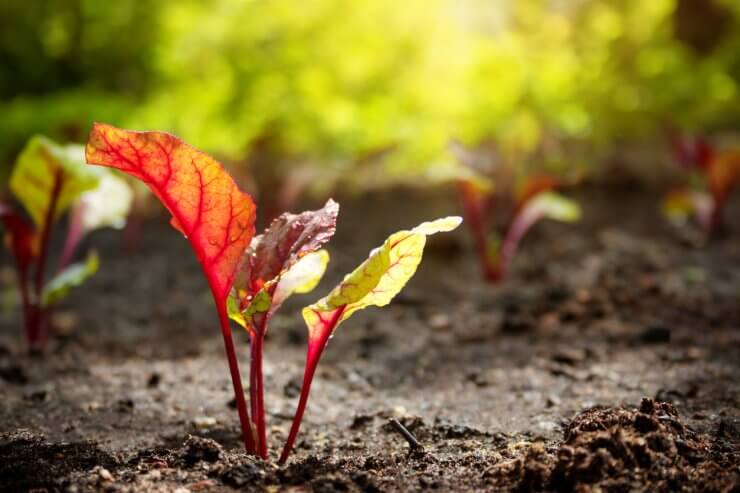
New beetroot seedlings growing in the garden sun
Beets like a full day of sun—preferably at least six hours of direct sunlight. They’ll do OK in partial shade, but that could reduce the size of their roots. Don’t plant your beets under a tree where they might encounter tree roots. Beets need at least 3 to 6 inches for their roots to reach down, although some varieties need more than a foot.
The soil should be well-drained and rich in organic matter. Sandy loam soil is best. Do your beets a favor and be sure to mix in some aged compost before you plant them.
They don’t need a lot of fertilizer to get going, but you do want to make sure your soil is not deficient in boron; boron is essential for beets to grow well.
In general, beets prefer a soil pH of 6.5 to 7.5, although you may see some varieties that will tolerate soil in a higher or lower range. One of your annual gardening tasks should be to get your soil tested. You’ll save yourself a lot of time and aggravation, and your plants will thank you by growing instead of languishing. Your local extension center will have information on how to get your soil tested. For a little bit of preparation work, you can get a lot of information about the composition of your soil.
Beets are a cool-weather crop; they don’t like blazing summer heat. So depending on your gardening zone, you can plant beets in early spring for a late spring harvest (about 60 days) and again in late summer for a fall harvest before a hard frost hits. If you live in a region that’s frost-free, you can plant a bonus crop in the fall for a winter harvest!
How do you grow your beets—full sun or partial sun? Have you had your soil tested or do you do it yourself? Please tell us your tips and tricks for growing great beets!

 Previous
Previous

